Light-Up Church Replacing The One Destroyed In 9/11 Attack Opens Its Doors
By Mikelle Leow, 11 Dec 2022
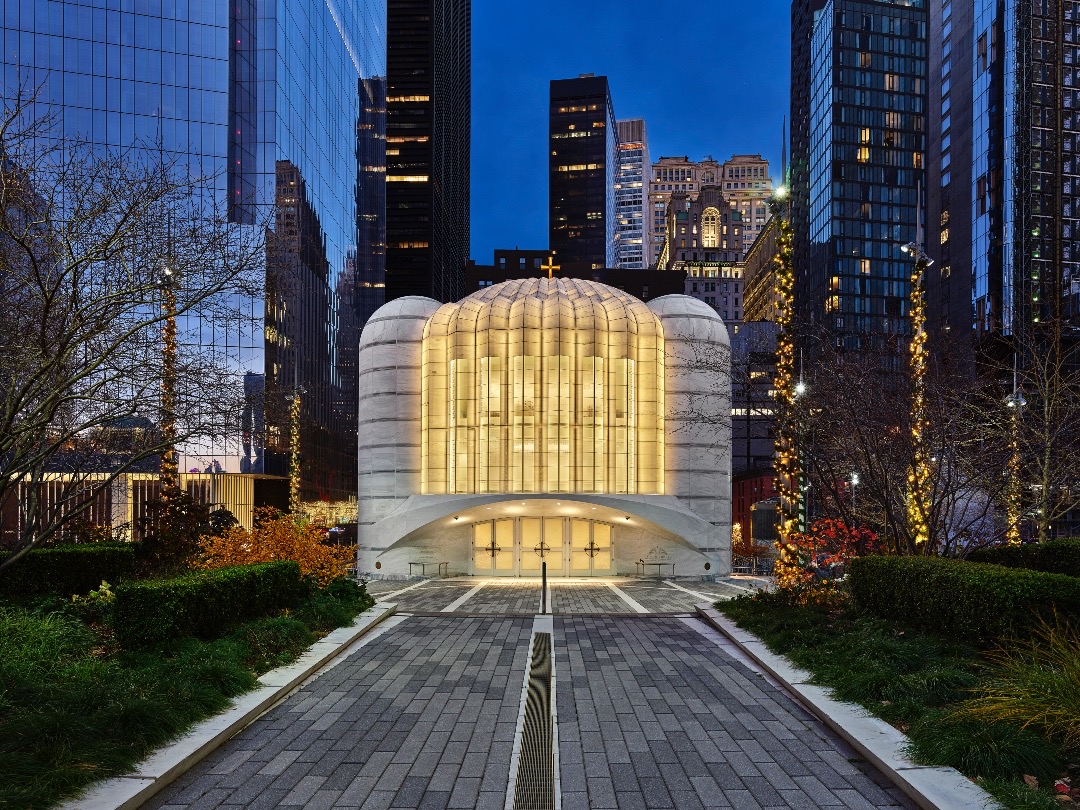
Image © Alan Karchmer for Santiago Calatrava, featured with permission
A new church standing in the place of another destroyed in the 9/11 attack has opened. The new St. Nicholas Greek Orthodox Church is primed as a beacon of hope and the human spirit for the years to come.
The icon of rebirth was designed by Spanish architect Santiago Calatrava as part of a master plan to rebuild the World Trade Center site following the tragedy, and it replaces the original 19th-century church of the same name. The sanctuary is situated atop the World Trade Center Vehicle Security Center and raised 25 feet above ground. The 9/11 memorial, once the twin towers, is located next to it.
Construction for the disaster-struck zone had been stunted for almost two decades. Initial plans to build an Islamic mosque and community center drew flak as people’s emotional wounds were still fresh from the terrorist attack. The site also saw a number of changes of hands through the years. The pandemic only dragged things further.
According to the Architect’s Newspaper, the area’s revival demanded a budget of US$57 million in design and renovation costs alone.
For obvious reasons, the teardown was perceived as a sign to start anew. The church has been reimagined from the ground up, forgoing the barebones row house concept of 1916 for a stately monument that evidently draws from Byzantine architecture, while remembering its link to the World Trade Center site and its history.
The revamped St. Nicholas Greek Orthodox Church borrows elements from the Hagia Sophia in Istanbul, which was once a Greek Orthodox Church as well before it was converted into a mosque, then a museum, and a mosque again.
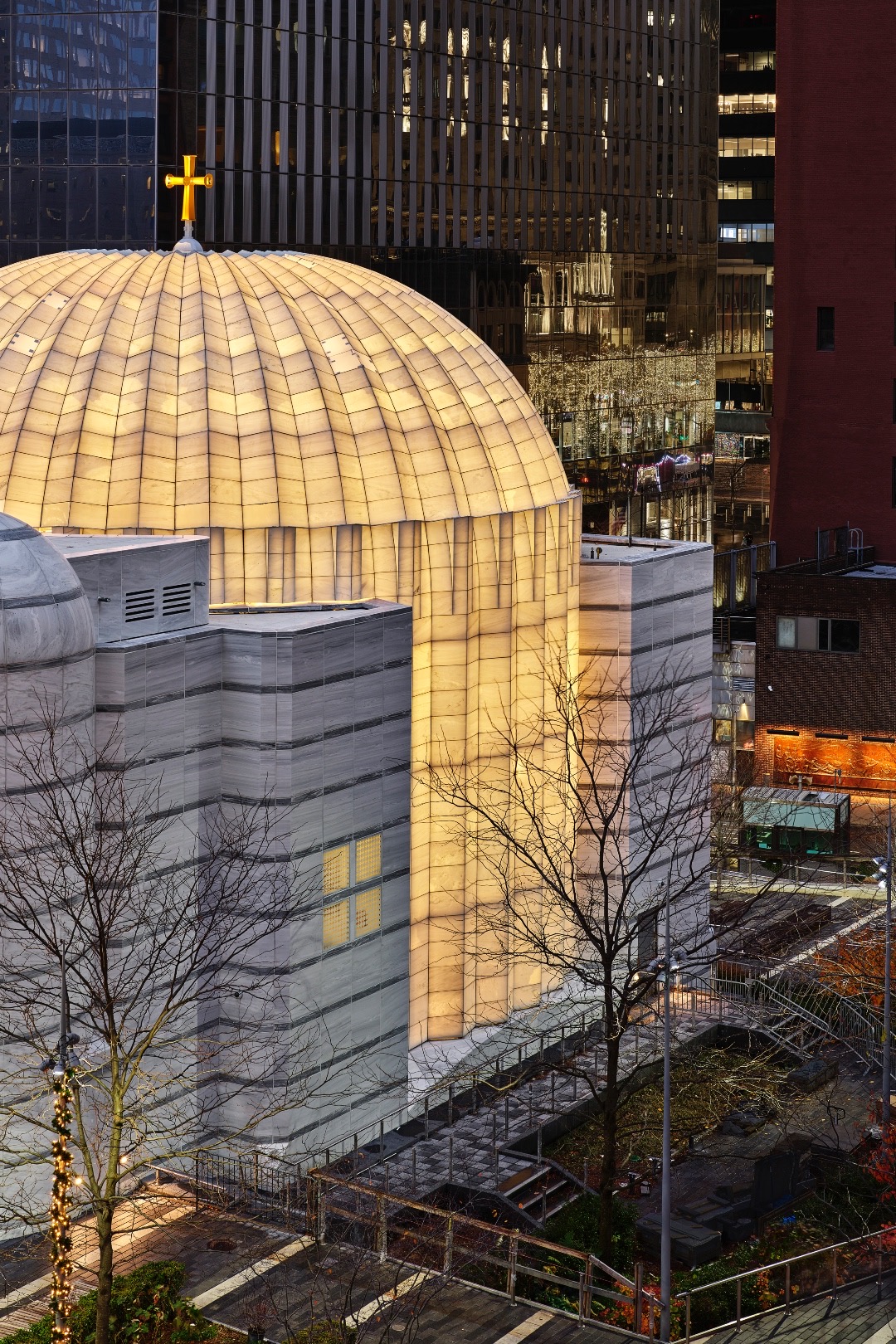
The heart is constructed from thin Pentelic marble, a nod to the Parthenon in Athens. At night, the dome looks to be glowing from within through the fine marble and backlit glass laminated panels, a visual metaphor for hope prevailing in darkness. Four stone-clad towers stand firm by its sides, creating almost a square from a bird’s-eye view.
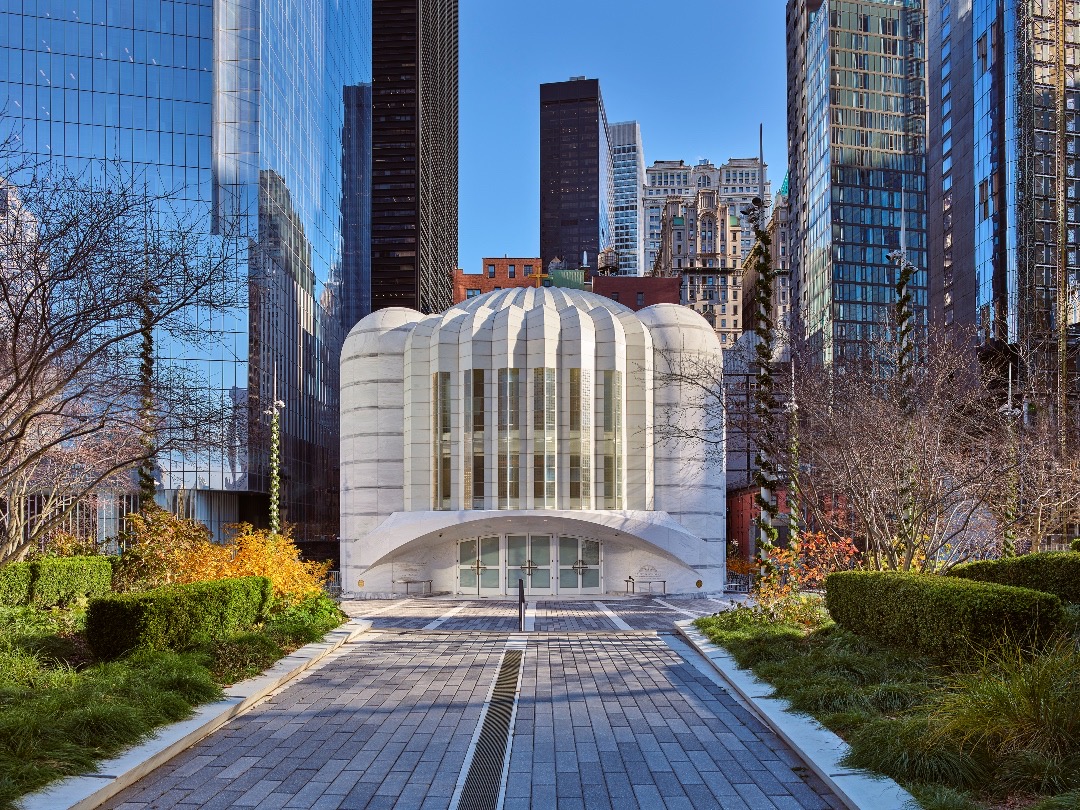
“I hope to see this structure serve its purpose as a sanctuary for worship but also as a place for reflection on what the city endured and how it is moving forward,” explains the architect.
Calatrava wishes to convey with the building what words couldn’t describe in the aftermath of the attack.
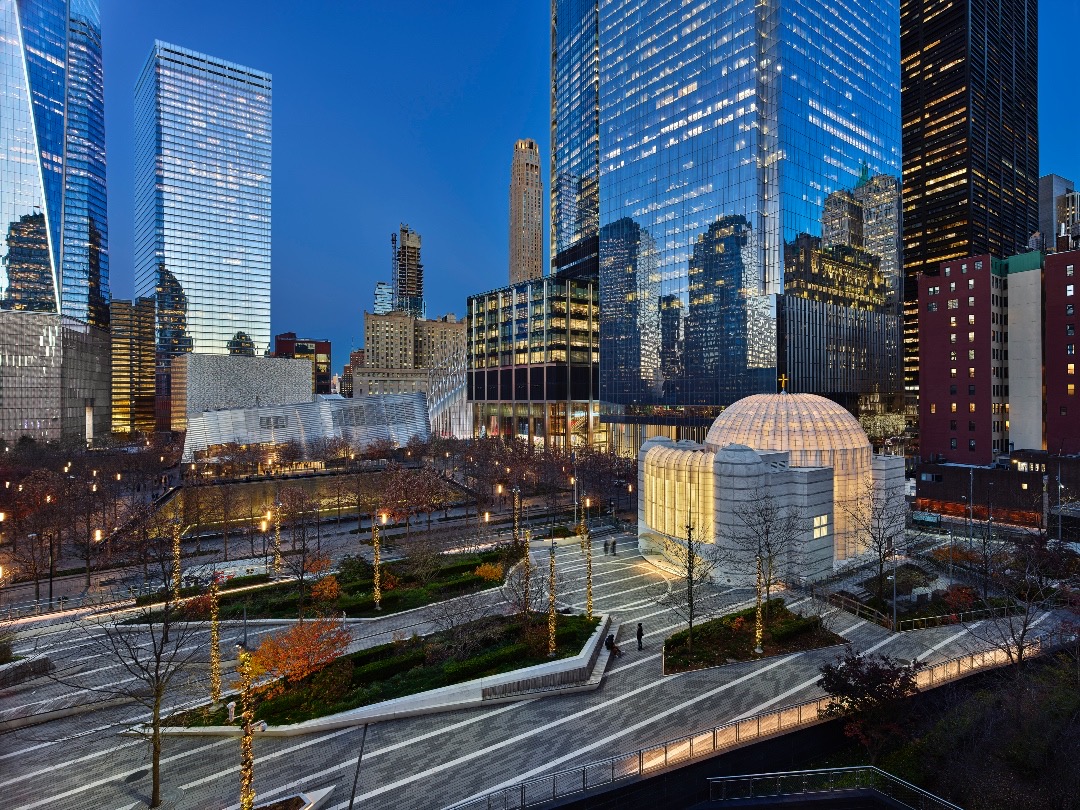
“Architecture can have an intrinsic symbolic value, which is not written or expressed in a specific way but in an abstract and synthetic manner, sending a message and thus leaving a lasting legacy,” the architect continues.
Inside, the Hagia Sophia-inspired dome sports 40 translucent windows and 40 stone ‘ribs,’ whose spaces project the images of 20 prophets. An altar greets visitors right at the entrance.
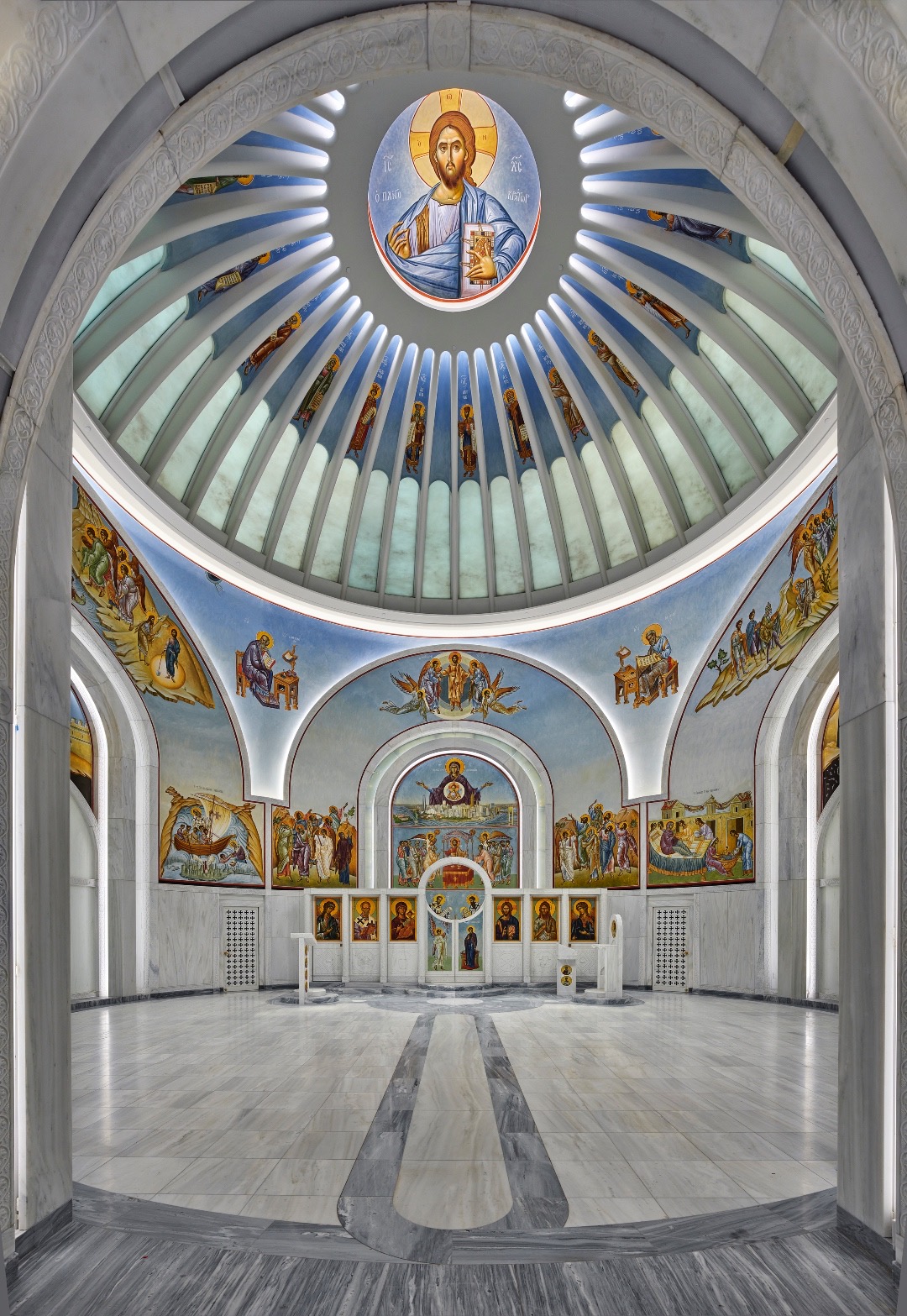
“The architectural elements incorporated into the structure are based on an in-depth study of the relationship between Byzantine architecture and numbers,” explains the architecture firm in a news release.
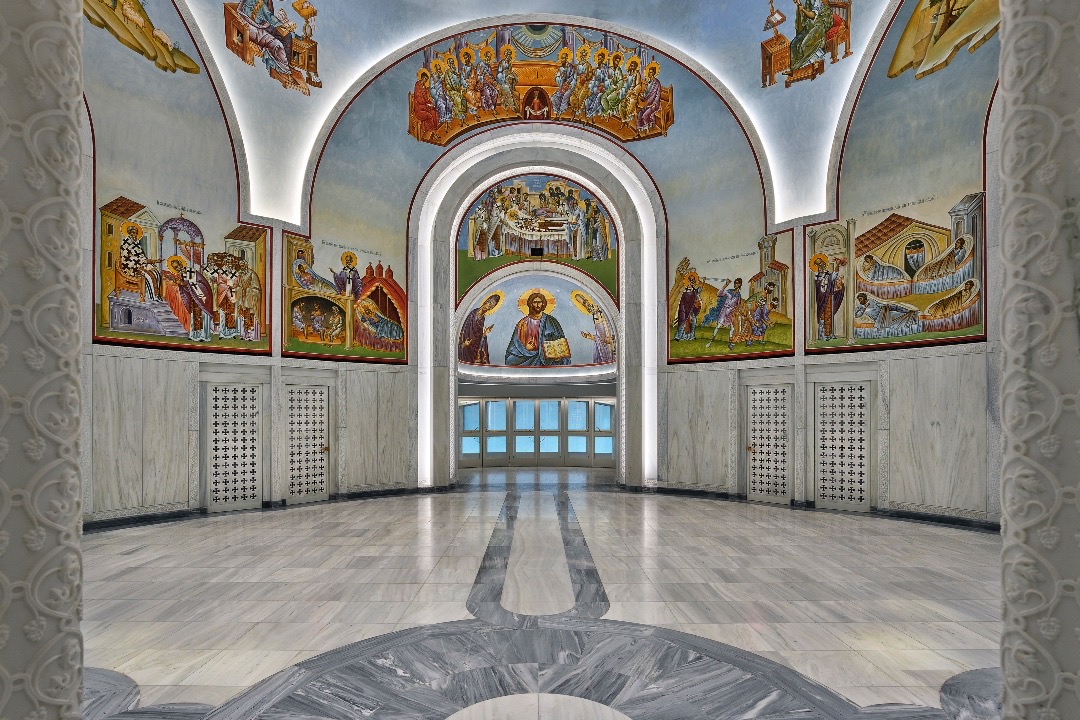
We can’t undo the past, but we can take steps to ensure the same mistakes don’t recur in the future.
“This Shrine will be a place for everyone who comes to the sacred ground at the World Trade Center, a place for them to imagine and envision a world where mercy is inevitable, reconciliation is desirable, and forgiveness is possible,” shares Ioannis Lambriniadis, Archbishop Elpidophoros of America.
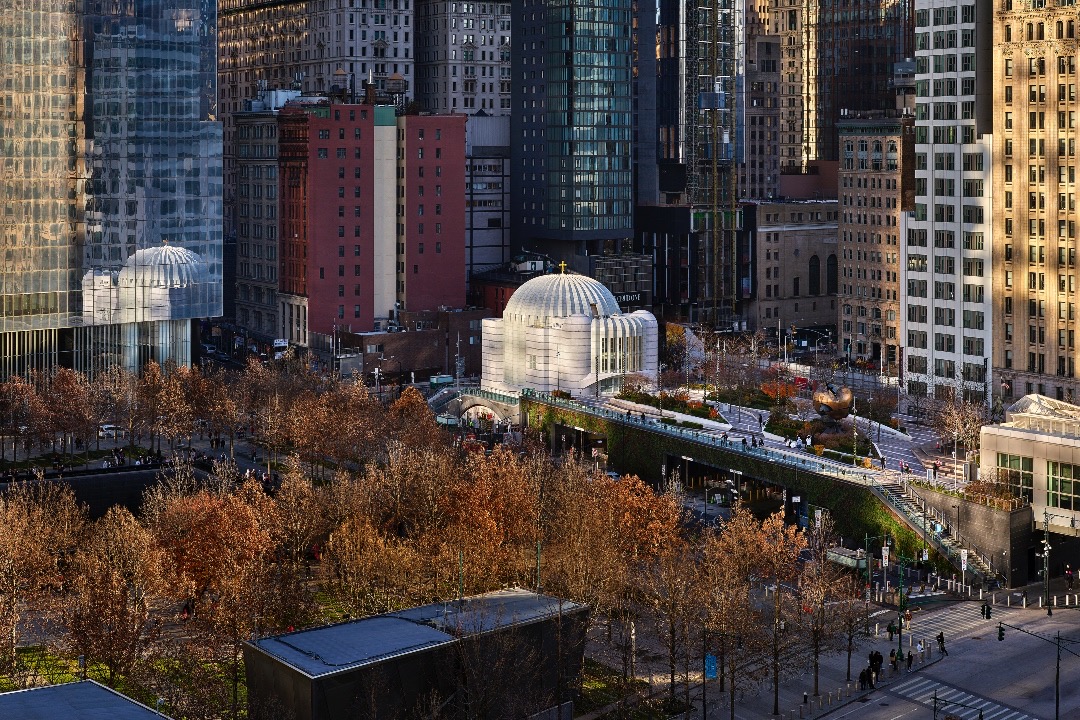
“We will stand here for the centuries to come, as a light on the hill, a shining beacon to the world of what is possible in the human spirit, if we will only allow our light to shine before all people, as the light of this Shrine for the nation will illuminate every night sky to come in our magnificent city,” Archbishop Lambriniadis reflects.
[via Dezeen and The Architect’s Newspaper, images © Alan Karchmer for Santiago Calatrava and featured with permission]





